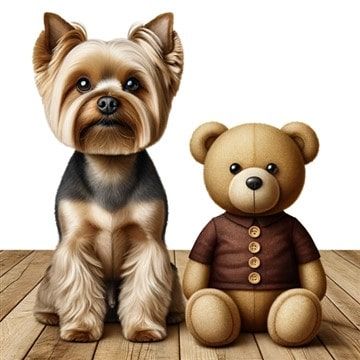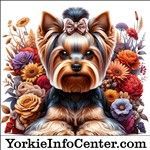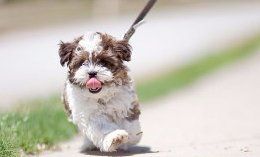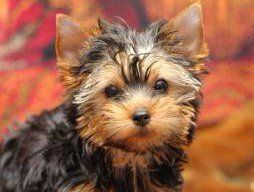Teddy Bear Yorkies
Overview
The term Teddy Bear Yorkie or Teddy Bear Yorkshire Terrier is heard now and again, and this can have different meanings. It can be used in reference to size, face shape (via mixed breeding), color, coat texture and hair cuts. This page explores the various meanings of this term and how they came to be.

Is There an Official Type of Yorkshire Terrier Called a Teddy Bear Yorkie?
#1 In reference to size:
The term "teddy bear" Yorkie is sometimes employed by breeders and enthusiasts to suggest that a Yorkshire Terrier is smaller or more toy-like than the standard size. However, it's important to note that Yorkshire Terriers, by breed definition, do not have a minimum weight requirement. They are considered very small toy breed dogs, with most weighing 7 lbs. or less. Therefore, using the term 'teddy bear' to imply that a Yorkie is smaller than the standard size is essentially a marketing tactic, as it plays on the adorable and diminutive image associated with teddy bears to attract potential buyers.
#2 In reference to face shape (often seen with mixed dogs):
This is a Shorkie Poo (50% Shih Tzu, 25% Yorkshire Terrier, and a 25% Poodle mix).
It has a 'Teddy bear' appearance but is not a recognized breed.
image by Nils Fretwurst (Own work), via Wikimedia Commons
To produce puppies like this, it is often a matter of mixing breeds. When the shape of the face is so far-removed from the standard that it causes the pup to look completely different, enough to dub it a Teddy, it is most often due to a Yorkshire Terrier being paired with a Shih Tzu, Maltese or Pekingese. Since mixed dogs can be given any nickname the breeder wishes, they sometimes choose 'teddy bear' as a moniker can appeal to potential puppy buyers.
#3 In reference to coloring:
Another way in which this term is used is to refer to the coloring of a Yorkshire Terrier puppy or dog. Some breeders and others may refer to black and tan Yorkies as a Teddy Bear Yorkies. However, it's important to note that all purebred Yorkshire Terriers are born black and tan. Starting at the age of 4 months to 9 months, there will be a gradual changeover to the adult coat and that is when black transitions to steel blue. During this phase, the tan often becomes a darker, deeper gold.
Since the majority of Yorkshire Terrier puppies all hold the same coloring, it is a bit misleading to dub any purebred Yorkie a 'teddy bear' based on coat color.
#4 In reference to coat texture:
Yorkshire Terriers are known for their wonderful single layer coat of hair. And part of ethical breeding practices is to strive to produce puppies that will continue with this wonderful trait. Coats with defects should not be bred. However, in some instances, a unscrupulous breeder may purposely breed pups with faulty coats that are shorter and with a more wooly texture than is expected with this breed. The pups are then dubbed 'Teddy Bears' as part of a marketing scheme of having 'special', rare puppies. It is an unethical breeding practice.
#5 In reference to hair cuts:
One reason to use this term is to describe a Yorkie Teddy Bear haircut. From what you have read so far, this obviously is the most ethical use of the terminology, as it does not involve altering the appearance of the dog, crossing a Yorkshire Terrier with another breed, or purposely producing puppies that do not meet the AKC guidelines.
This breed can have many different hairstyles. One of the most popular ones is called the 'puppy cut,' which refers to a close trim that keeps the hairs short and close to the body. It eliminates most of the issues with tangles that can occur with long show coat styles and makes grooming easier for the owner.
Some people, both owners and breeders, may refer to the 'puppy cut' as the 'Teddy Bear' cut, and in this case, both expressions are accurate. The short coat does make a Yorkie look like a puppy, and it also reminds one of a stuffed teddy bear toy.


-260x207.dm.edit_iTwXBN-1920w.jpg)
